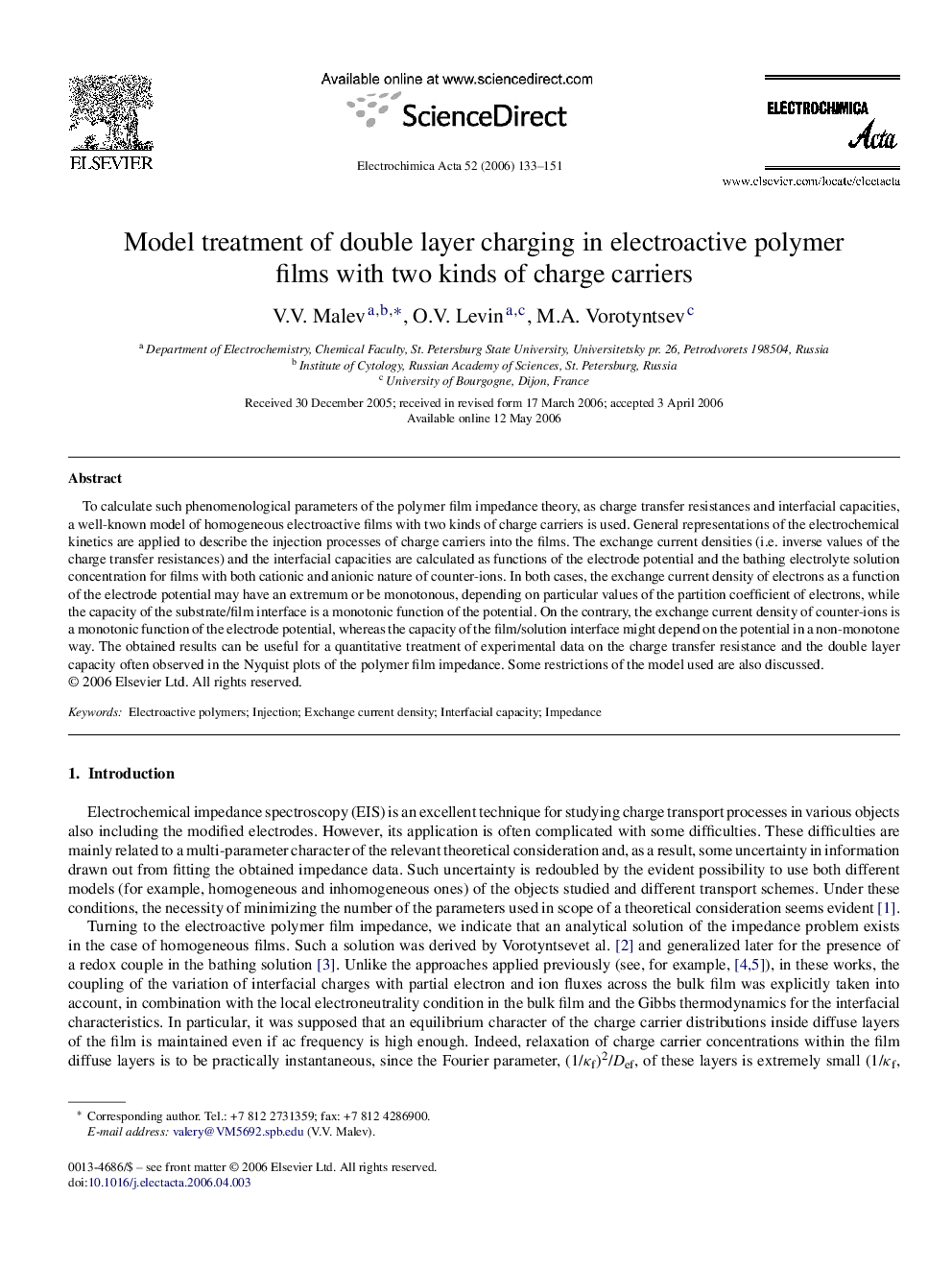| Article ID | Journal | Published Year | Pages | File Type |
|---|---|---|---|---|
| 194518 | Electrochimica Acta | 2006 | 19 Pages |
To calculate such phenomenological parameters of the polymer film impedance theory, as charge transfer resistances and interfacial capacities, a well-known model of homogeneous electroactive films with two kinds of charge carriers is used. General representations of the electrochemical kinetics are applied to describe the injection processes of charge carriers into the films. The exchange current densities (i.e. inverse values of the charge transfer resistances) and the interfacial capacities are calculated as functions of the electrode potential and the bathing electrolyte solution concentration for films with both cationic and anionic nature of counter-ions. In both cases, the exchange current density of electrons as a function of the electrode potential may have an extremum or be monotonous, depending on particular values of the partition coefficient of electrons, while the capacity of the substrate/film interface is a monotonic function of the potential. On the contrary, the exchange current density of counter-ions is a monotonic function of the electrode potential, whereas the capacity of the film/solution interface might depend on the potential in a non-monotone way. The obtained results can be useful for a quantitative treatment of experimental data on the charge transfer resistance and the double layer capacity often observed in the Nyquist plots of the polymer film impedance. Some restrictions of the model used are also discussed.
